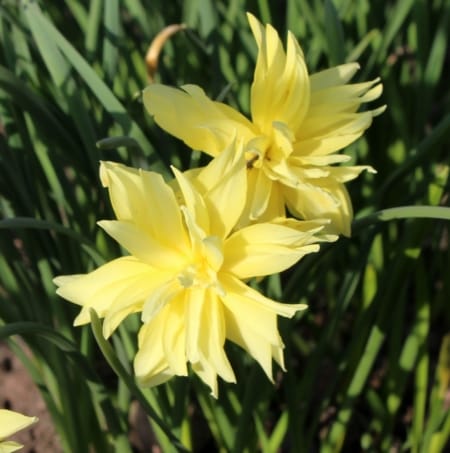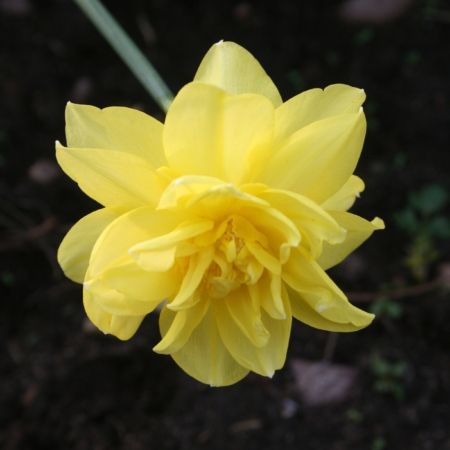Description
‘Eystettensis’ (syn. ‘Capax Plenus’)
4Y-Y
[Double]
(uncertain origin; cultivated since at least 1613)
An early hand-coloured engraving of this unique, dwarf, primrose-yellow daffodil was published in Hortus Eystettensis (1613): a lavishly illustrated florilegium of plants growing in the gardens of Willibaldsburg palace at Eichstätt in Bavaria. Parkinson (Paradisus, 1629) describes it perfectly: “consisting of six rowes of leaves, every rowe growing smaller … and so set or placed that every leafe of the flower doth stand directly … one upon or before another unto the middle … “. It is possible that all the “leaves” are petaloids derived from perianth segments and that coronal petaloids are absent. Perhaps this is why the flowers are so consistently well-formed; the doubling cannot retreat to a handful of small petaloids within the cup.








